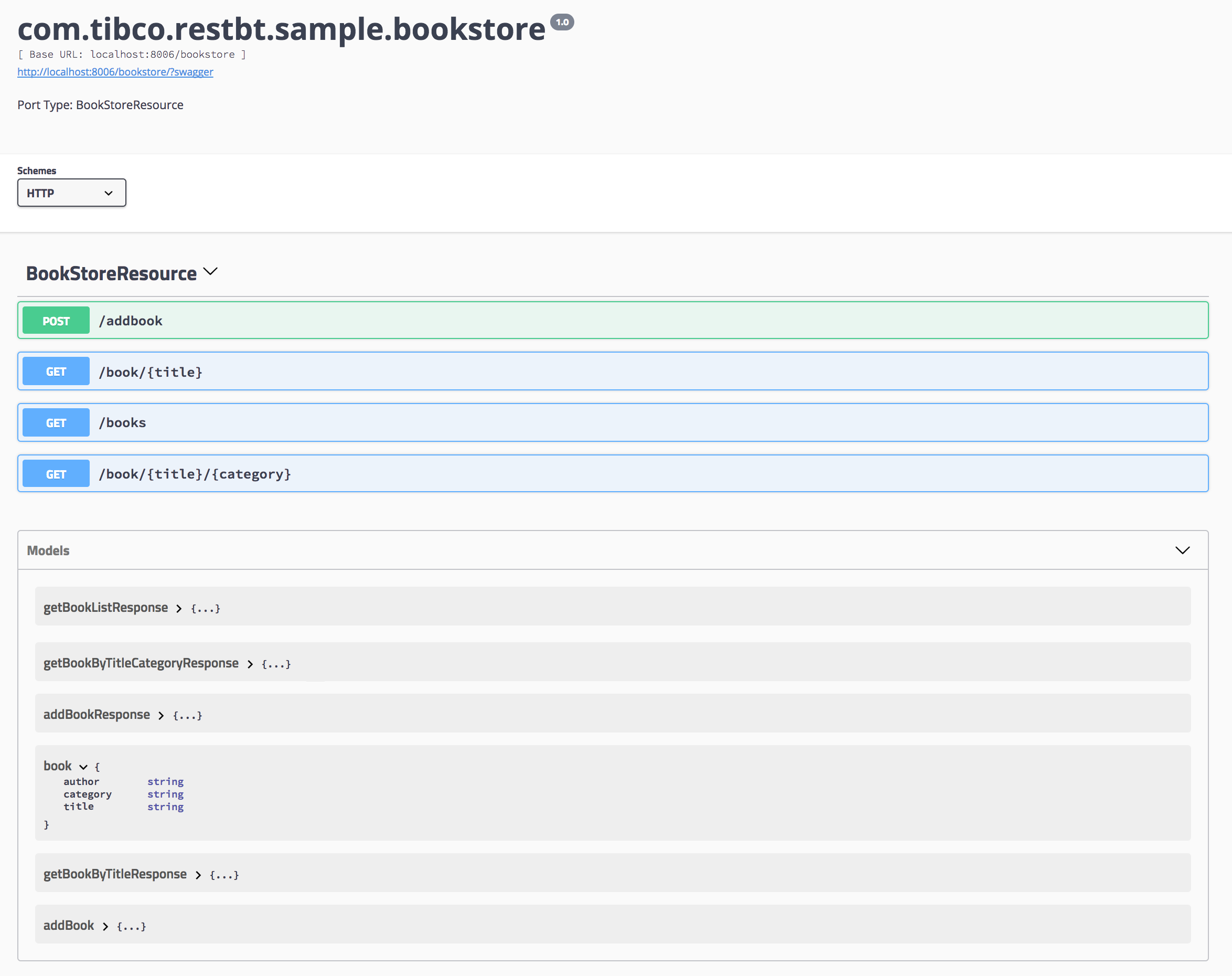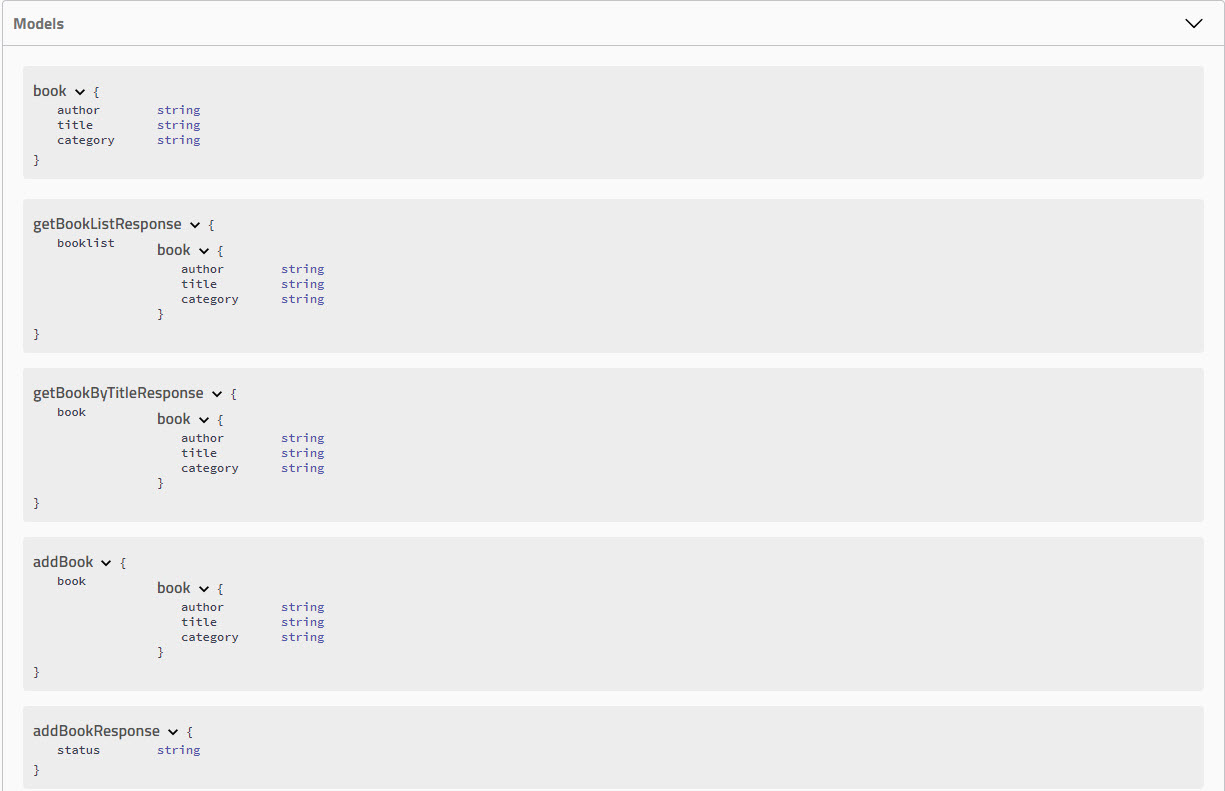Swagger UI
The Swagger UI is an open source project to visually render documentation for a Swagger-defined API, directly from the API's Swagger specification. Currently, it uses Swagger specification version 2.0 and Application API version 1.0.
REST Service Binding samples are available in <TIBCO_HOME>/amx/<version>/samples/rest/samples/. This section uses the bookstore sample to provide an overview of the Swagger UI.
The bookstore sample illustrates how a bookstore administrator can look up a books inventory and add new books. The administrator can look up books by a specific title or get a list of all books.
The following information is displayed on the Swagger UI.
- Base URL: Each server has a base URL that has the following format. All API endpoints are relative to the base URL.
scheme://host[:port][/path][parameters]
For example:
http://localhost:8080/bookstore/books
Where
- localhost is the host
- 8080 is the port to access the host
- http://localhost:8080/bookstore is the base URL
- /books is the endpoint path
The following is an example with path parameters:
http://localhost:8080/bookstore/books/{title}Where {title} is the path parameter and you must provide the parameter value when making an API call.
The following in an example with query parameters:
http://localhost:8080/bookstore/books?storename=demo
Where ?storename=demo are the query parameters. - Port Type: Port type of Service.
- Schemes: Security schemes used to execute the operations.
-
Operations: Displays a list of all the operations that are implemented by the REST Service on each Endpoint. Operations are HTTP methods (example: GET, POST, DELETE) used to access the Base URL. These operations are configured in TIBCO Business Studio. The corresponding schema and parameters are configured in the WSDL file.
From this section, you can invoke an operation and receive a live Response for the specific inputs.
- Models: Displays the schema in detail in the JSON format. It shows how data in the WSDL and XSD is configured.
The schema for the BookStore example is shown below.


